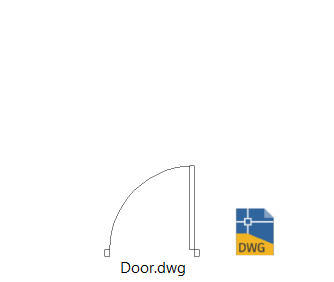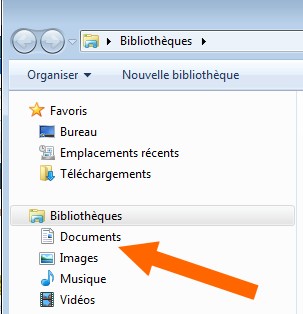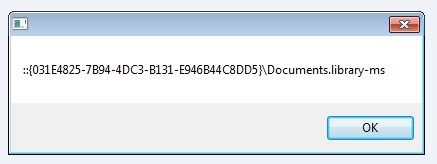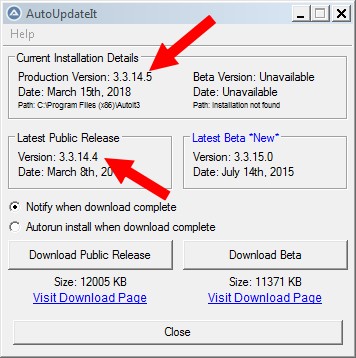
erix
Active Members-
Posts
50 -
Joined
-
Last visited
Everything posted by erix
-
Au3toCmd -- Avoid false virus positives. (Version: 2022.09.01)
erix replied to Exit's topic in AutoIt Example Scripts
Hi @argumentum Thanks for the links and tips. I tried inno setup and it works, but I still can't get the same thing as with the exe file. I have two icon problems. From what I understand, you still need a CMD file that indicates that you need to run the AutoIt3.exe or AutoiIt3_64.exe file and the A3X file. When building the installation file, the executable must be the CMD file, and if you ask to create a link on the desktop, the link points to the CMD file with the icon of this file (which apparently cannot be changed). The user ends up with a gear icon, but not the application icon. It is possible to change the desktop shortcut icon, but this is a manual operation. Another problem is that A3X files don't take a custom icon into account when they're compiled, so when I run the program, the AutoIt icon appears in my application's dialog box. I would have preferred to put a custom icon like on EXE files. In your opinion, can these two problems be corrected? Concerning certutil -decode, I'm sorry, but I didn't understand what I could do with it even after consulting several sites. Can you tell me more? Thanks- 176 replies
-
- a3x
- false positives
-
(and 3 more)
Tagged with:
-
Au3toCmd -- Avoid false virus positives. (Version: 2022.09.01)
erix replied to Exit's topic in AutoIt Example Scripts
@Exit No idea what I'm doing wrong? Thanks Eric- 176 replies
-
- a3x
- false positives
-
(and 3 more)
Tagged with:
-
Au3toCmd -- Avoid false virus positives. (Version: 2022.09.01)
erix replied to Exit's topic in AutoIt Example Scripts
Hi, I'm very interested in this project because I often have the problem of false positives when I send my exe files to other people. However, I can't get it to work. I must be doing it wrong. Here's how I do it: - I place the Au3toCmd.au3 file in the same folder as my script. - I open the Au3toCmd.au3 file with Scite. - I run the Au3toCmd.au3 file with Scite. - The script asks me to select an au3 file. I select my script. - It works a little and I get a message telling me that a cmd file has been created in my script folder and that a shortcut has been created on the desktop. By the way, it still says: X64 Mode=No even if I set #AutoIt3Wrapper_UseX64=Y or 1. I double-click on the shortcut or CMD file and a command prompt opens briefly and closes again, but my application is not executed. Nor have I found any other zip or other files as indicated in previous messages. What am I forgetting to do or doing wrong? Thanks- 176 replies
-
- a3x
- false positives
-
(and 3 more)
Tagged with:
-
On the whole, it works pretty well. There are, however, a few files that are recent versions and should therefore contain a PNG, but which are not recognized by the script. No PNG data found DWG files, even recent ones, don't necessarily have a thumbnail. This option is enabled by default, but can be disabled from AutoCAD. You might think that there are no thumbnails in these files, but when you open them in software such as AutoCAD, thumbnails are displayed in the software. Here are a few examples of problem files. Apparently, the code returned by $i_Position_PNG_Header is longer than the usual 3 digits of most other files. Do you have any ideas on how to correct this? Thank you. dwg.zip
-
I tested this code and it seems to work fine. Well, I admit I didn't understand all the code, but I did manage to integrate it into my application. 😉 I haven't tested this second code, but does it really offer an advantage over the old code? Would you advise me to use the latter or not? Thanks
-
I've tested your code, but it doesn't detect the image in BMP format. Maybe it's not organized like a classic BMP. I should have sent you an older dwg to test. This has now been done as an attachment. While searching, I came across this article: https://www.codeproject.com/Articles/21356/VBDwgImageExtractor Which then sent me to this documentation explaining the dwg specification and I came across page 93 which seems to give the hexadecimal codes to look for and in testing a few, they are well recognized. However, I didn't understand how to find the header or the data. https://static.opendesign.com/files/guestdownloads/OpenDesign_Specification_for_.dwg_files.pdf According to this document, the preview can also be stored in WMF format, but this is rarer. I'd be interested to know. I'm aware that I'm interested in something that's not really at my level, but I'd like to get as far as I can. 😉 Thank you for your help. Door2.dwg
-
I don't know why there are several pngs in the dwg file, some of which don't seem to work, but never mind, the first one in the list is the one for the thumbnail I'm interested in. In any case you are very strong, congratulations. 😉 @KaFu, it works very well. @UEZ, I don't know why but I always get this result Saved 0 PNG files For the past 10 years, images in dwg files have been in png format, previously they were in BMP format. To be able to extract both types, is it possible to locate and write the file for a BMP format? Many thanks
-
Hi, Yes it is : https://www.autoitscript.com/autoit3/docs/script_breaking_changes.htm
-
Hi Kafu, I tried your first method with SMF, but it extracts the file format icon and not the thumbnail. Hi UEZ, unfortunately, I realize that I don't have the skills to do this. I've opened the dwg file I attached to my first message with notepad and I can't see what to do with the data. I did find an IHDR that would correspond to the location of the PNG data, but then I see lots of symbols that I don't understand. This is way beyond my skills. Kafu, I've tried Bitmaprip and it seems to work. It extracts several images, some of which are unreadable, but there's one image with the thumbnail. Maybe there's something to be done with it. Well, I would have preferred a UDF so as not to depend on an application, but I can't have everything. By the way, if someone much more competent than me feels like starting to create this type of UDF, it could be useful to other users. Well, I say that, but I know it's not as simple as that. I don't know if it's even possible Thank you for your help
-
Just one question. How come the Windows file explorer can display the image? Thanks
-
Hi Andreik, Too bad, I'd understood that a PNG image was embedded in the dwg file and I'd hoped that it was possible to extract this image. https://blog.jtbworld.com/2020/09/autocad-thumbsizedwg-thumbnail-preview.html Obviously not. I don't feel able to use another application to do this. Never mind, I'll do without the preview. 😒 😉 Eric
-
Hi, I'm trying to retrieve the image (icon) from a DWG file (AutoCAD), but I can't find a way to do it. Attached is a DWG file of a door. This image can be seen in the Windows file explorer if you display the icons. (However, I think you need compatible software to display the image, otherwise only the file format icon appears. Here's how it looks in the file explorer, I'd like to retrieve this image in a GUI as you can do with a classic image file. Is this possible, and if so, how do I go about it? Thank you for your help. Eric Door.dwg
-
I am beginning to understand how it works and also that it is not that simple. Thank you for all this information.
-
@TheXman If in the Libraries folder I click on Document, I would like to have the Document path. @LarsJ Sorry, but my level is not high enough to understand how to get the path with this code. I thought it was going to be something simple, but I feel like I came across something more complicated than I thought. Thank you for your help anyway
-
Yes, indeed, I was not specific enough. On Windows 7, these are libraries folders. On Windows 10 these folders are not displayed by default. https://support.microsoft.com/en-au/help/4026298/windows-show-libraries-in-file-explorer Or right click in the left panel and choose "Show Libraries" It is with these files that the problem arises.
-
@JLogan3o13 Thank you for your answer. Please test with this simple code: $folder = FileSelectFolder("", "") MsgBox(4096,"",$folder) And select one of the special folders I use Windows 7 French and Autoit 3.3.14.5 The result obtained is :
-
Hello, When using the "FileSelectFolder" command and the user chooses a special folder (Documents, Pictures, Vidéos) the result obtained is not the folder path but a CLSID of type : "::{450D8FBA-AD25-11D0-98A8-0800361B1103}" I would like to be able to recover the path of the folder even if the user uses a special folder, but I have not yet found a method to convert a CLSID to a path. I have tested commands like _WinAPI_ShellGetSpecialFolderPath but this one doesn't seem to take into account CLSID but CSIDL. So I tried to find a method to convert CLSIDs into CSIDL, but I didn't find anything either. Would you have a method to retrieve the path when a user selects a special folder or command that converts CLSIDs to a path? Thank you. Eric
-
_WinAPI_GetSaveFileName don't return file extension
erix replied to erix's topic in AutoIt General Help and Support
Ok, thanks Melba for your research and this explaination. Eric -
Hello, It's not very annoying but Autoupdateit says that the last version is 3.3.14.4 instead 3.3.14.5. Thanks Eric
-
_WinAPI_GetSaveFileName don't return file extension
erix replied to erix's topic in AutoIt General Help and Support
Hi Melba. I tried with Autoit 3.3.14.5 and 3.3.14.2 With 3.3.14.5, result are without extension With 3.3.14.2, result are with extension Just one difference in my test, the include is not the same. Thanks Eric -
_WinAPI_GetSaveFileName don't return file extension
erix replied to erix's topic in AutoIt General Help and Support
Right Melba, it works. While waiting for a correction i will use this trick. Thanks kaz for your confirmation. -
Hi Autoit Expert, Since Autoit 3.3.14.4 _WinAPI_GetSaveFileName don't return file extension in the result. Before, if i don't say something wrong, when i used a code like that : #include <WinAPIDlg.au3> $export = _WinAPI_GetSaveFileName("Select a file", "CSV (*.csv)|txt (*.txt)") MsgBox(4096,"",$export[2]) The result for $export[2] was file.csv or file.txt Now, i only have "file" without extension Of course, it's if user give only name of file and doesn't write the extension. So, now how can i know if user have selected CSV or TXT. Thank you Eric
-
Hi Jos, Thank you Eric




